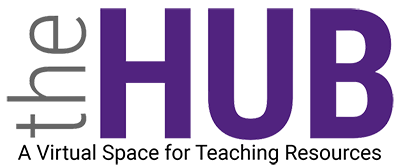 This short article will discuss practical ways to communicate with students about grading through the syllabus, the first place students look for information about the course. A syllabus effectively communicates with students about their grades when it describes how they will be able to demonstrate their learning and how their instructors will grade their assignments. In addition to the course schedule, grade breakdown, and institution policies, this document makes explicit connections among goals, assignments, and grades so that students understand what their professors require.
This short article will discuss practical ways to communicate with students about grading through the syllabus, the first place students look for information about the course. A syllabus effectively communicates with students about their grades when it describes how they will be able to demonstrate their learning and how their instructors will grade their assignments. In addition to the course schedule, grade breakdown, and institution policies, this document makes explicit connections among goals, assignments, and grades so that students understand what their professors require.
Recommendation 1: Make connections among goals, assignments, and grades.
A syllabus should include clear goals, objectives, and outcomes for the course. Add a few paragraphs to explain the course organization to prepare students for the course and guide them in achieving the learning goals. The daily schedule should show students the activities of each meeting.
- Announce the goals for each unit of the course.
- Relate each unit to the general course goals.
- Add the daily schedule of events for the weeks within the unit under the unit title and goals. Include a line that tells the students how to prepare for class and describes the in-class activities.
Example Excerpt from a Syllabus for a Literature Course
Unit 2: First-Person Accounts by Outsiders
Unit Goals:
- To become familiar with a major piece of American fiction written as a first-person account by an “outsider.”
- To analyze this fiction orally and in writing, using the tools of literary analysis, focusing on symbolism, plot, and allegory.
- To analyze orally and in writing the role of the “outsider” in this fiction.
- To enjoy reading, discussing, and writing.
Day
Tuesday 3/3
Preparation
- Read the prologue and Chapters 1-7 of Ellison’s Invisible Man. (2 hours)
- To help you analyze the plot, symbol, and allegory, write the following (1 hour): List of three questions about the novel.
- Bring your writing to class for discussion.
- Hand in: Pass-fail.
In-Class
- Manuel Lopez: report on Tuskegee Institute (5 min.)
- Ruth Harrison: What is a lobotomy (1 minute)
- Clear up fundamental questions about the novel.
- Discuss plot, allegory, and symbolism.
- In-class free-write: discuss your reactions to the novel so far. Share (5 minutes)
- Discussion: What do you think will happen next in the novel? Why?
Recommendation 2: Explain What Each Grade Represents and How They Are Calculated
The syllabus should include the grading model and how each grade is calculated for assignments, projects, quizzes, tests, and the final project or exam. Help students by adding a rationale to clear up misunderstandings from the start. They will want to know the grading criteria and standards for their work. Walvoord and Anderson (1998) present three grading models for calculating grades. 1. Weighted letter grades 2. Accumulated points 3. Multiple category system.
Model 1: Weighted Letter Grades
This model assumes that multiple forms of performance are present, and each is valued differently in calculating the final course grade. Instructors can add different values and criteria to decide how heavily to count each type of work.
- Tests: average letter grade (40% of course grade)
- Field project letter grade (30% of course grade)
- Final exam letter grade (20% of course grade)
- Class participation grade (10% of course grade)
Model 2: Accumulated Points
This model assumes that points can be offset by making up deficiencies with good work in other areas. It is a developmental model that can improve poor performance early in the course by allowing students to earn enough points over the semester.
- Tests (possible 40 points)
- Field project (possible 30 points)
- Final exam (possible 20 points)
- Class participation (possible 10 points)
- Total (possible 100 points)
Model 3: Multiple Category System
In this model, the student must meet or exceed the standards for each category of work to get a particular course grade. The assumption is that different types of work are essential, and doing well in one kind does not compensate for doing poorly in another. When there are two distinct categories of work, good performance in one is not a substitute for unsatisfactory performance in the another.
Course Grade
A
B
C
D
Tests and Exams
A average
B average
C average
D average
Lab Reports
B average
C average
D average
D average
Recommendation 3: Address academic honesty and plagiarism and provide resources to help students succeed.
In addition to language about academic policy on honesty and plagiarism, instructors should also include links to the institution’s library pages to help the students find information and tutorials about how to successfully research a topic and write a paper that shows their work. The MC library has many self-paced tutorials to help students understand the critical skill of avoiding plagiarism.
Reference:
Walvoord, B.E., & Johnson Anderson, V. (1998). Effective grading: A tool for learning and assessment.
Jossey-Bass.
